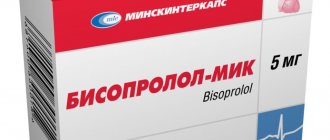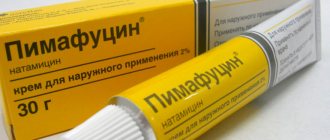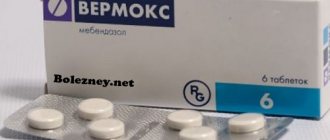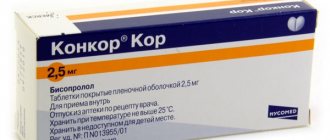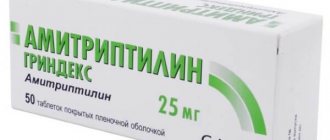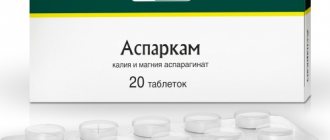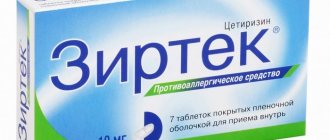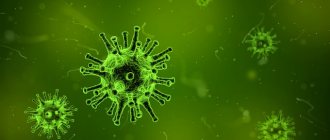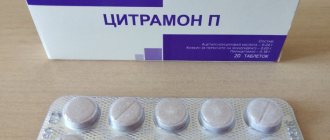Probably, almost every one of us has had to take antispasmodics at least once in our lives. They are often prescribed to both adults and children for a variety of diseases related to different organs and systems. One of the extremely popular drugs of this kind is Drotaverine, the instructions for use of which we will consider.
What is this medicine? Can everyone always take it? How does it affect blood pressure? Are there any contraindications to taking it? We will find answers to all these, and not only, questions below, having familiarized ourselves with the principle of action of the drug and the dosage when taken.
Composition and release form
The drug is available in the form of tablets, film-coated tablets, and solution for injection.
Drotaverine tablets are round, beveled and scored, yellow-green in color. Each tablet contains 40 mg of active ingredient.
Excipients:
- povidone (polyvinylpyrrolidone);
- potato starch;
- milk sugar;
- talc;
- magnesium stearate.
10 pieces in a blister, 1, 2, 3, 4 and 5 blisters in a cardboard box or 100 pieces in a polymer jar and cardboard box.
Drotaverine Forte tablets contain 80 mg of active ingredient. 10 pieces in a blister, 2 blisters in a cardboard box.
Injection. 1 ml of solution contains 20 mg of drotaverine hydrochloride. In ampoules of 2 ml, 5 ampoules in blister packs, 2 packs in a cardboard box.
pharmachologic effect
Drotaverine hydrochloride is a drug that has antispasmodic activity against the smooth muscles of the gastrointestinal tract, biliary and urogenital systems, as well as against the smooth muscle layer of blood vessels.
The drug helps relax smooth muscles, eliminates spastic pain, and by expanding the lumen of blood vessels, improves the supply of oxygen to tissues.
The mechanism of action of the drug is associated with its ability to change the potential of cell membranes and their permeability. The drug reduces the activity of the phosphodiesterase enzyme, promotes a consistent increase in cAMP levels and an increase in the initial absorption of calcium ions by cells.
The drug is characterized by a low degree of binding to plasma proteins (binds predominantly to albumin, alpha and beta globulins). After oral administration, the peak concentration of the active substance in the blood plasma is reached within 45-60 minutes. Metabolized in the liver.
The half-life is approximately 22 hours. It is excreted mainly in the urine in the form of metabolites; a certain amount of the drug is excreted in the feces. Drotaverine penetrates the hematoplacental barrier.
If you are going to take Drotaverine for a headache, pay attention to the symptoms of migraine. Perhaps you are faced with this very disease.
When should you lower the temperature?
If your child has a fever, do not rush to get medicine. When the temperature reaches 38 degrees, there is no need to treat anything. The exception is age under three months and febrile seizures. If we are talking about a cold, then give the body the opportunity to cope with the disease on its own.
But if the temperature has risen to 38-39 degrees, it’s time to help with pharmaceutical drugs.
| Name | Signs | Medicines |
| Pink fever | No chills, warm feet, skin takes on a pinkish tint | "Paracetamol" |
| Pale fever | The skin turns pale, acquires a marble tint, the legs are chilly and cold to the touch. “Goose bumps” appear, the child feels chills | "Paracetamol" and "No-spa" |
When the temperature is above 39, it is recommended to combine “No-shpa” with “Paracetamol” and “Analgin”. Additionally, Ibuklin is prescribed. “No-shpu” can be replaced with “Papaverine”.
Indications for use
The drug in the form of tablets and injection solution is used to relieve spasms and eliminate spastic pain, including:
- spasms due to cholecystitis, cholelithiasis, stomach and/or duodenal ulcers;
- constipation of spastic etiology;
- spasms of smooth muscles of the cardiac and pyloric parts of the stomach;
- spastic colitis;
- intestinal colic caused by gas retention.
In addition, the drug is used to relieve spasm of smooth muscles in proctitis, pyelitis, cystitis, urethrolithiasis and nephrolithiasis.
Interesting to know! The drug can be prescribed during diagnostic procedures, including cholecystography.
Drotaverine is used as a vasodilator for spasms of the smooth muscle layer of blood vessels, to eliminate headaches caused by spasm of cerebral vessels.
The drug is also used in gynecological practice for algodismenorrhea, to prevent and eliminate spasm of the smooth muscles of the uterus during pregnancy, including threatened abortion. The drug is indicated for spasm of the uterine pharynx during childbirth, prolonged opening of the pharynx and postpartum contractions.
Be careful!
Infants have a very weak stomach and intestinal system, since the microflora has not yet formed, and the fermentation system is imperfect. Absorption and digestion of food occurs with difficulty and is fully formed during adulthood. For this reason, infants suffer from gases and fermentation, pain and fever. The baby is worried, spits up, and suffers from belching.
In the case of colic, No-Spa can only be prescribed to children with fever by a doctor. Typically, pediatricians try to make do with gentle means:
- massages;
- infusions;
- decoctions;
- teas;
- gas outlet pipes.
Only when all of the above methods are useless does the time for medication come. “No-spa”, like some other drugs, is capable of dissolving intestinal gases, which is why it is prescribed to children. But the medication depresses the heart and is recommended as a last resort when no more suitable medications are at hand.
In infancy, “No-spa” in case of high fever in a child caused by stomach pain, is permissible per day in the amount of one eighth of a tablet or a quarter.
Contraindications
Common to both dosage forms:
- Increased individual sensitivity to the components of the drug.
- Severe heart failure, severe arterial hypotension, atrioventricular block II-III degree. The drug is also contraindicated in patients with cardiogenic shock.
- The drug is contraindicated in patients suffering from severe renal and/or liver failure.
- The drug in the form of tablets Drotaverine and Drotaverine Forte contains lactose, so it should not be used to treat patients with congenital lactase deficiency, as well as glucose-galactose malabsorption syndrome.
- The drug in tablet form Drotaverine Forte is not used to treat children under 12 years of age.
- The drug, regardless of the form of release, should be prescribed with caution to patients suffering from prostatic hyperplasia, angle-closure glaucoma and atherosclerosis of the coronary arteries, as well as patients with suspected atherosclerosis of the coronary arteries.
- The drug should be prescribed with caution to women during pregnancy and lactation.
- The drug is not recommended for use in patients whose work involves operating potentially dangerous machinery or driving a car. If it is necessary to prescribe the drug, you should refrain from work requiring increased attention for an hour after taking drotaverine.
During pregnancy: the drug penetrates the hematoplacental barrier, so its use during pregnancy is possible only if the expected benefit to the mother is higher than the potential risks to the fetus.
If it is necessary to use the drug during lactation, the issue of possible interruption of breastfeeding should be addressed.
Find out what your blood pressure should be during pregnancy.
"No-Shpa" during pregnancy
In early pregnancy, taking this drug is often recommended to reduce the tone of the uterus, which helps eliminate the threat of spontaneous abortion. The studies carried out, as well as clinical trials of the drug, indicate that drotaverine does not have a teratogenic or embryotoxic effect on the fetus. True, it has been proven that this drug is able to penetrate to some extent through the blood-brain barrier.
In this regard, immediately before using No-Shpa at the beginning of pregnancy, it is imperative to discuss this issue with a doctor, assessing all the benefits and possible risks to the life and health of the mother and her fetus. At a later stage of gestation and during labor, the use of the drug is contraindicated, since bleeding is likely due to uterine hypotension.
Instructions for use
Like the bulk of Drotaverine tablets, it should be taken orally. The product is placed in the mouth and washed down with a sufficient amount of clean liquid, without the need to crush, dissolve or chew it.
Interesting to know! There is no need to adhere to a meal plan; Drotaverine is taken individually.
The duration of the therapeutic course, as well as the required daily dose, is determined by the leading specialist after collecting data and examining the patient.
- If it is necessary to relieve a spasmodic attack in an adult or teenager, it is recommended to take no more than 2 tablets (40 mg) per day. A maximum of 240 mg of Drotaverine can be taken in 24 hours.
- For the treatment of children under adolescence, the dosage is determined exclusively by the doctor.
- At the age of 6 to 12 years, you can take no more than 40 mg of the drug per day.
Administration is performed intramuscularly; in exceptional cases, for example, if the patient has liver or kidney dysfunction, it can be administered intravenously (very slowly, drip). To prevent collapse, if administration is carried out intravenously, the patient should be in a horizontal position.
- Adults are administered no more than 4 ml of Drotaverine 1 to 3 times a day.
- For the treatment of adolescents, 2 ml or less can normally be administered 1 to 3 times a day.
As for the duration of taking the drug, this decision should be made only by the attending physician. Independently determining the duration of treatment can lead to unpleasant complications. Only a qualified specialist is able to adequately assess all possible risks.
Important! The drug must be administered intramuscularly even more slowly than intravenously.
Side effects
Some undesirable reactions cannot be ruled out due to the use of Drotaverine in tablets and injections. The instructions for use contain the following information. The most common side effects of the drug are:
- disruption of the digestive process, consisting of dyspepsia and changes in stool;
- fainting;
- cephalgia;
- swelling of the mucous membrane;
- bronchospasm;
- Quincke's edema;
- sleep disturbance;
- dermatitis;
- increased sweating;
- decreased pressure in the arteries;
- depressed respiratory function;
- atrioventricular block;
- bradycardia;
- violation of impulse patency from the atrium to the ventricles.
Overdose
When using excessive doses of the drug, patients experience the development of atrioventricular block, cardiac arrest and paralysis of the respiratory center.
There is no specific antidote. In case of overdose, discontinuation of the drug and symptomatic therapy are indicated.
For atrioventricular block, atropine and isoprenaline are used intravenously; in case of cardiac arrest, the use of atropine or adrenaline intravenously and temporary cardiac stimulation are indicated; in case of respiratory arrest due to paralysis of the respiratory center, artificial ventilation is indicated.
Treatment of drug overdose should be carried out under the constant supervision of medical personnel.
Drug interactions
- When used in combination, the drug may reduce the effectiveness of levodopa.
- With the simultaneous use of drotaverine with other drugs that have antispasmodic activity, there is a mutual enhancement of therapeutic effects.
- When using the drug simultaneously with tricyclic antidepressants, procainamide and quinidine, an increase in arterial hypotension caused by these drugs is observed.
- Drotaverine helps reduce the spasmogenic effect of morphine.
- When used simultaneously, phenobarbital enhances the antispasmodic effect of drotaverine.
Also check out the list of the most effective high blood pressure pills.
Interaction with other drugs
Drotaverine has the ability to enhance the therapeutic effects of other antispasmodics and weaken the effect of levodopa. When used together with Phenobarbital, the antispasmodic effect of Drotaverine is enhanced.
At elevated temperatures, “Drotaverine” is often included in the lytic mixture, which includes “Analgin” (it can be replaced by “Paracetamol”) and “Diphenhydramine” (or “Suprastin”). In this combination, drugs effectively fight “white” fever.
Analogs and price in pharmacies
The price of 40 mg tablets starts from 15 rubles, and the injection solution from 75 rubles.
The pharmaceutical market is ready to offer several drugs similar in composition to Drotaverine. They all contain identical active ingredients, but their prices can vary dramatically. Thus, the most popular analogues of Drotaverine are:
- No-Shpa;
- Ple-Spa;
- Biospa;
- Spasmonet;
- Spasmol;
- Spazoverin.
There are preparations based on papaverine hydrochloride, which is essentially a precursor of drotaverine, and has identical properties:
- Papaverine;
- Nikoverin;
- Papazol;
- Platyfillin.
Drotaverine is considered more effective than Papaverine, however, it may have more side effects. As for the difference between No-Shpa and Drotaverine, their effectiveness is largely similar, however, the more modern version of the drug better helps cope with the tasks assigned to it.
This is due to the fact that No-Shpu is produced from higher quality and better purified components. At the same time, the drug has fewer side effects, which makes its use safer.
Pale fever
It is permissible to use the medication under the supervision of a doctor in the case of rare, exotic diseases. For example, to bring down a child’s temperature, “No-spa” can be used if a diagnosis of “pale fever” is made. This is a specific disease in which:
- the skin turns pale;
- the temperature rises;
- extremities are cold;
- there is a sharp chill.
Since the cause of the disease is vascular spasms, therapy that combines:
- antipyretics;
- antispasmodic medications.
Prescribe from a fifth to half a tablet in combination with Analgin and Paracetamol. The specific dosage is chosen based on the age and weight of the baby. “No-spa” dilates blood vessels, thereby lowering the temperature.
